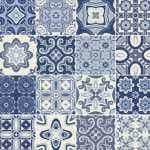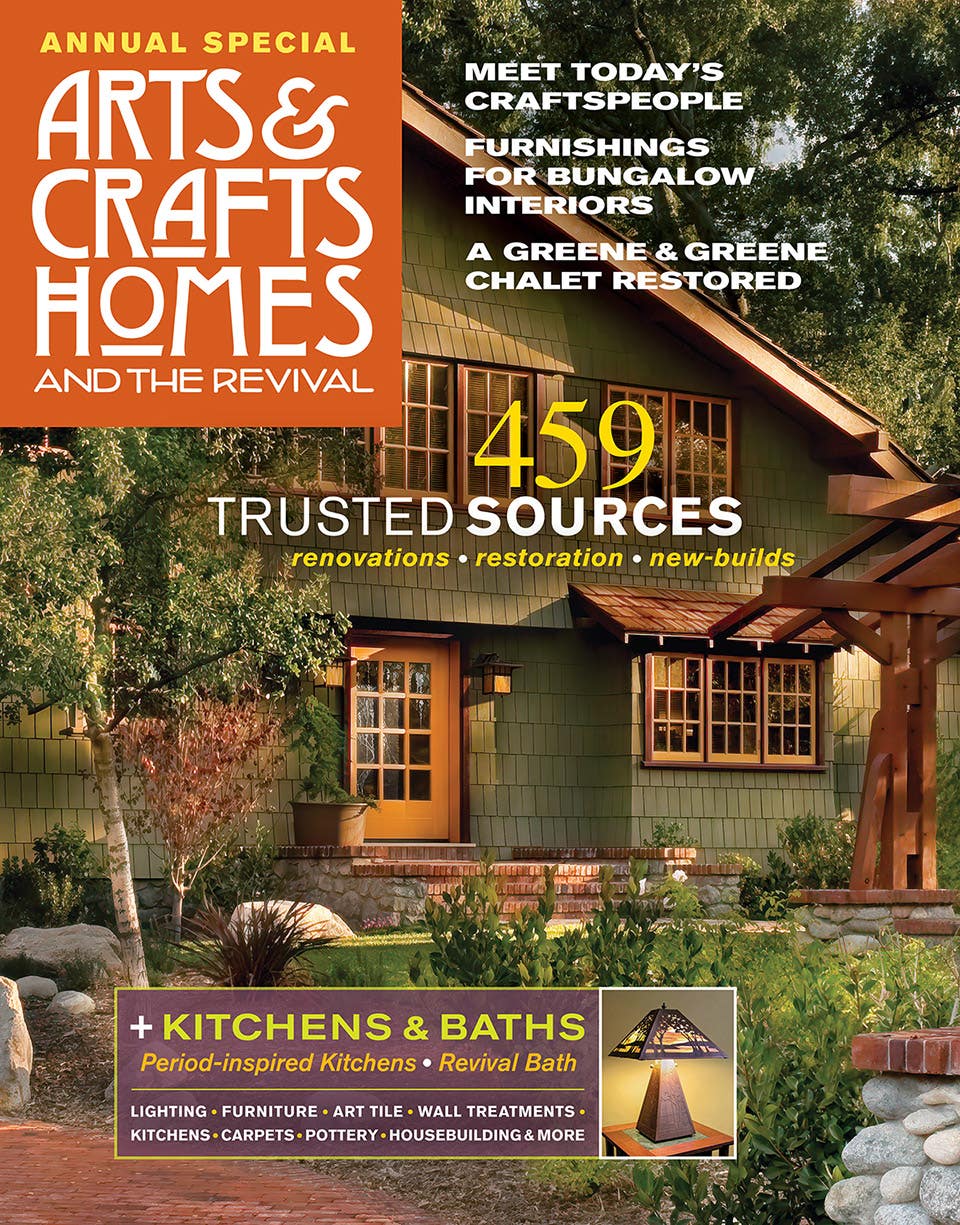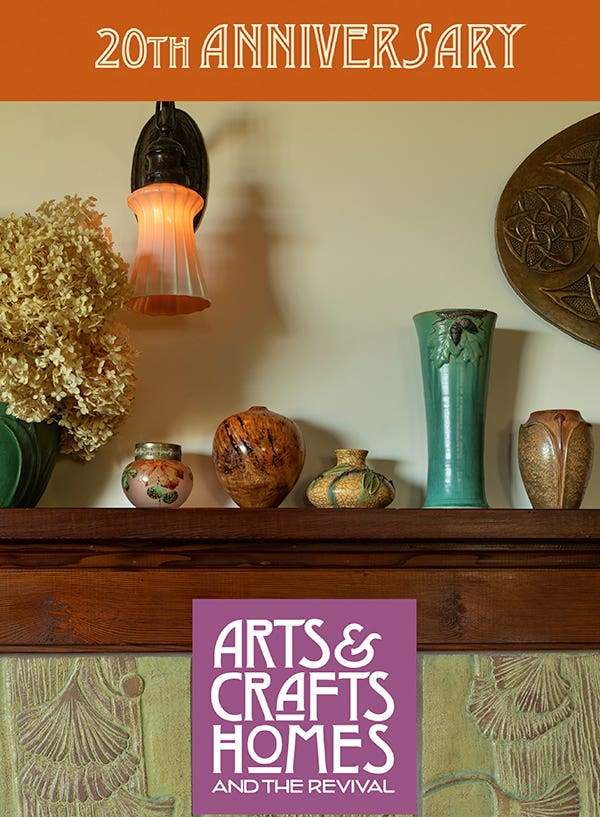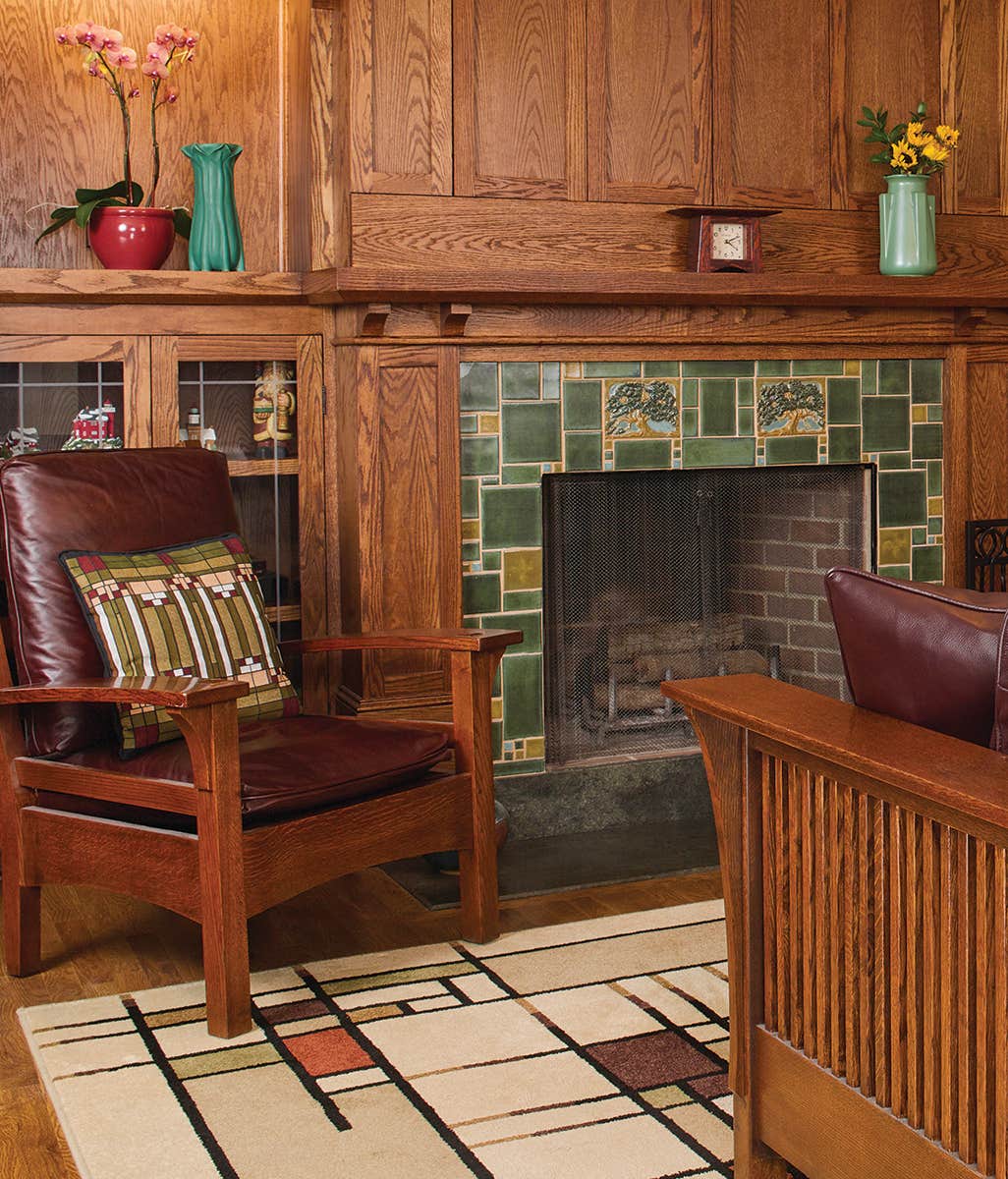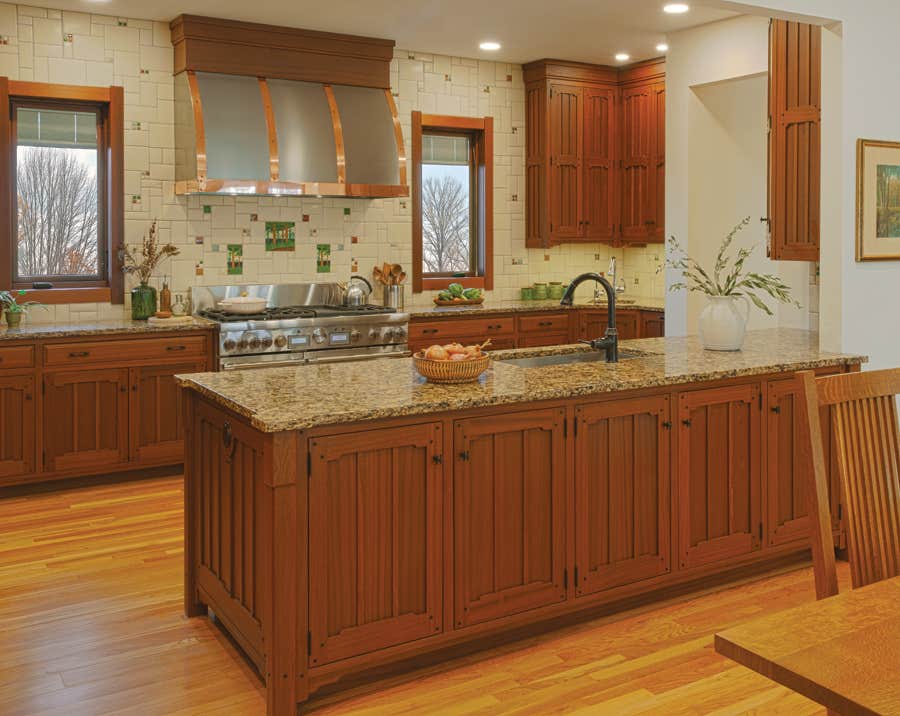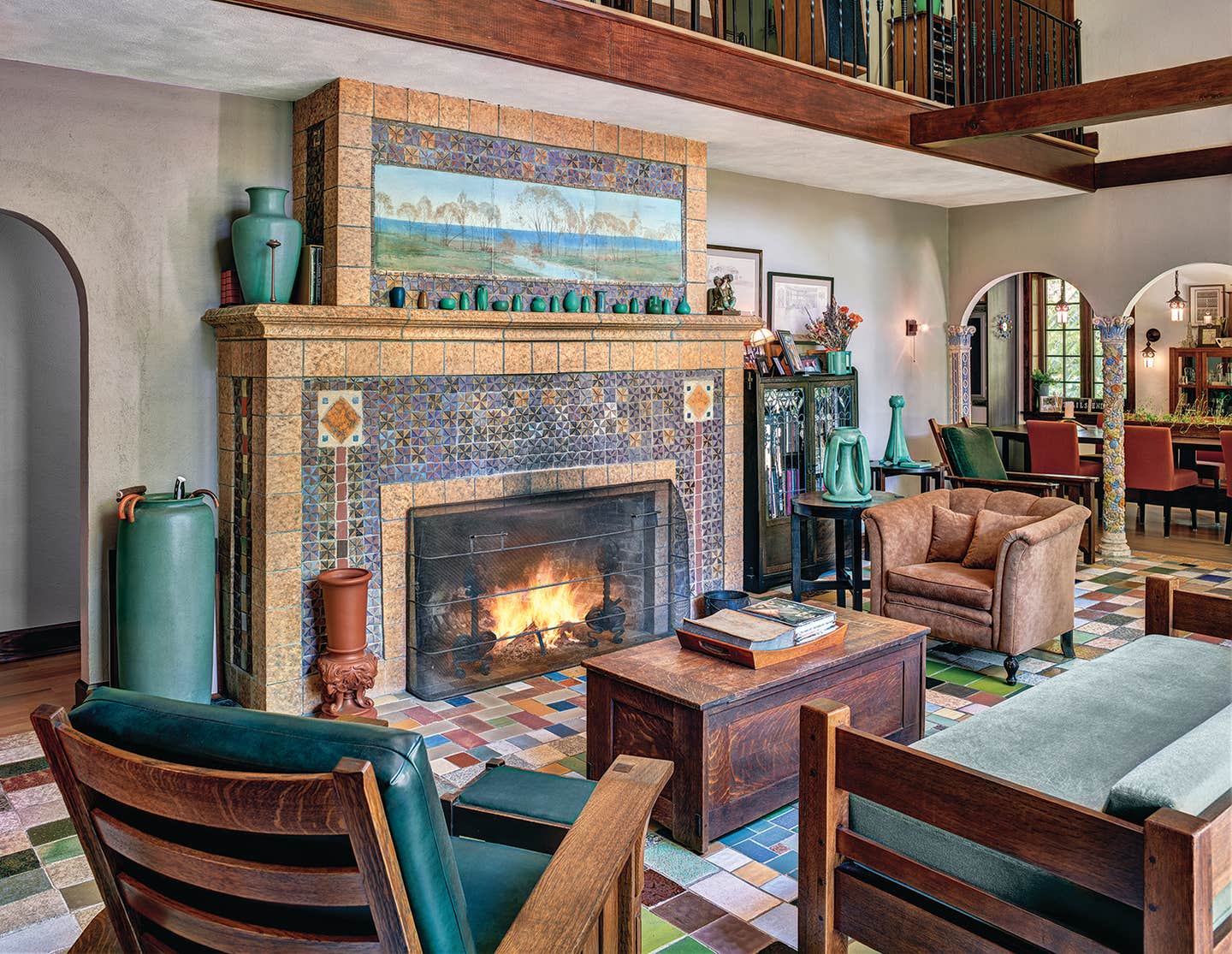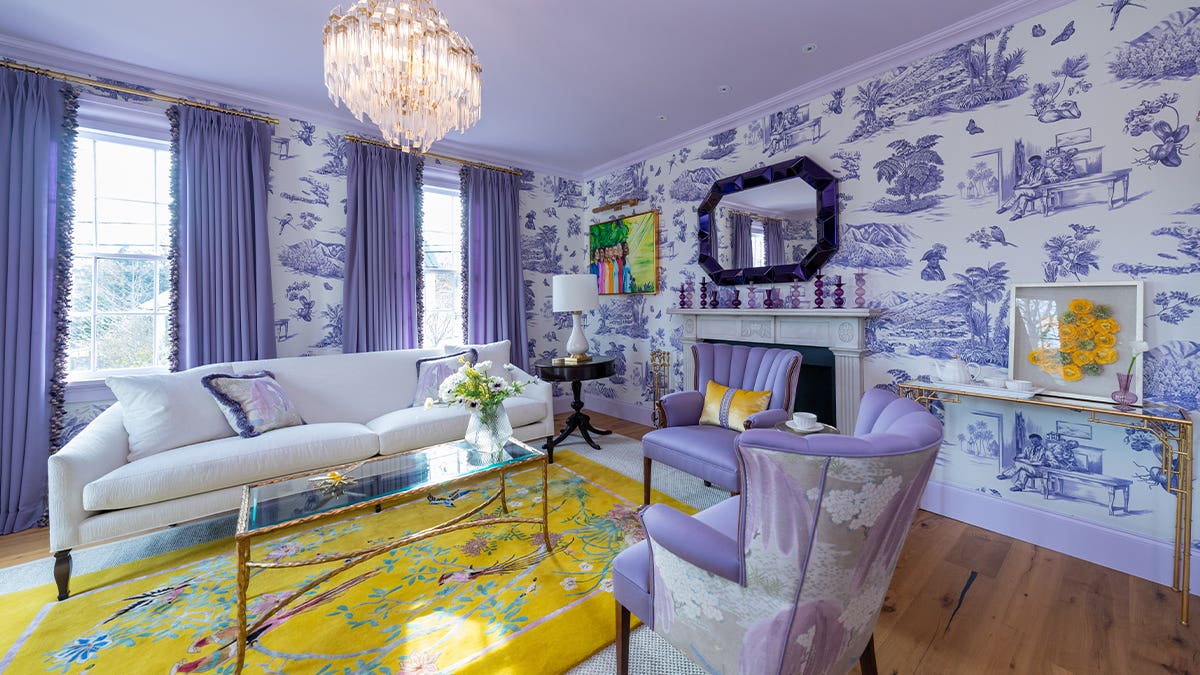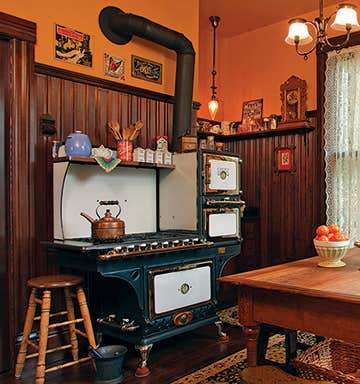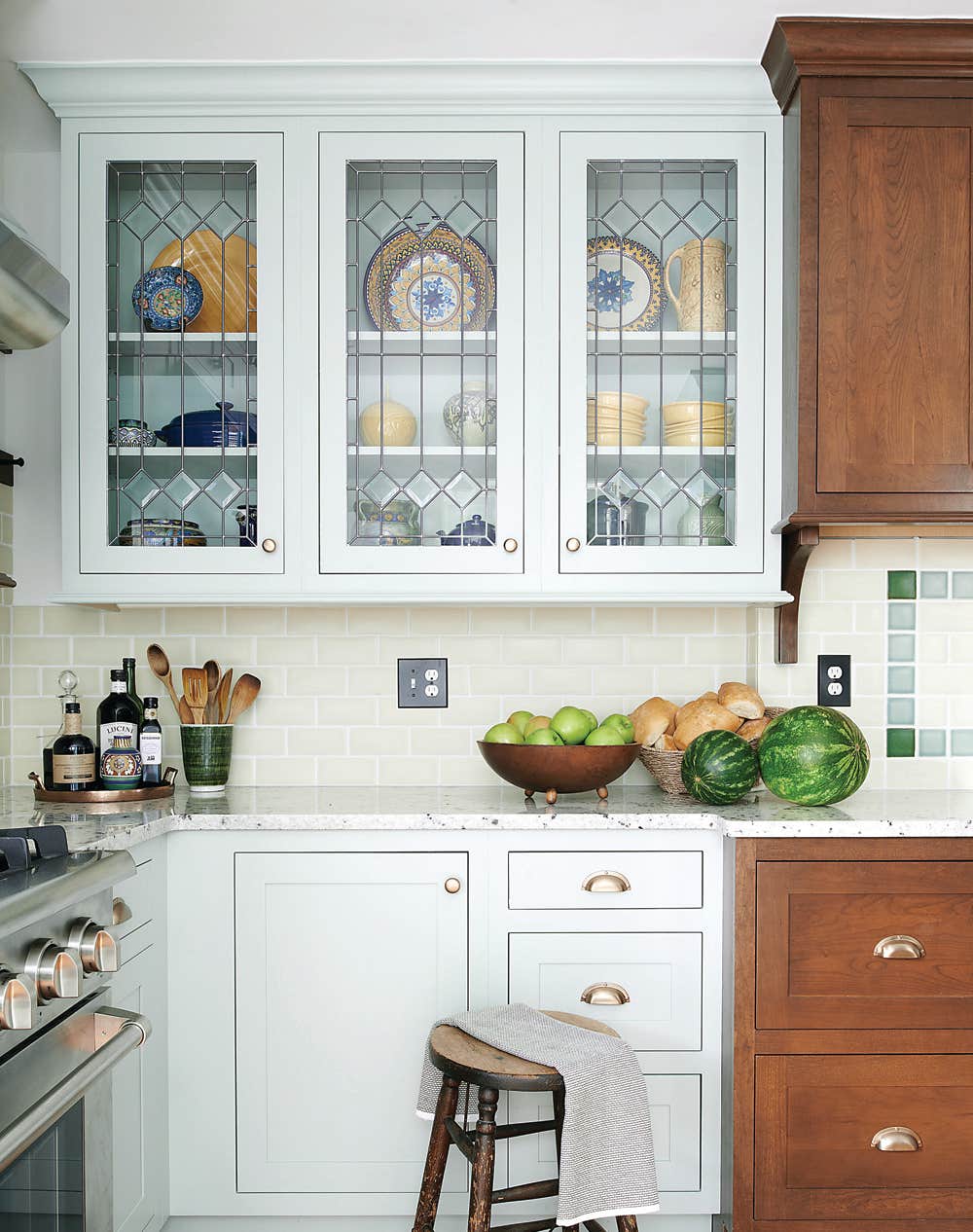Historic Mosaic Patterns for Serviceable Floors
Penny round, hex, or square, mosaic tile lends itself to utilitarian floors that are showpieces of pattern.
In 1890 or 1915, the focus was on hygiene in service rooms. Bathrooms, for example, held just the necessities—sink, toilet, and tub or shower. Fixtures were smooth and white, floors waterproof and easy to clean. Kitchens were designed for function, too. In both rooms, as well as foyers and back halls, tiled floors were common, especially unglazed (slip-free) mosaic tile patterns.
At first most were done in white tile, reinforcing the sanitary emphasis. In baths, the tiles usually were small, usually one-inch in diameter in keeping with the scale of the room, while kitchens sometimes had mosaic pieces of two inches or bigger.
Hexagon tiles were the most common; once grouted, the six-sided pieces create an interesting but not overwhelming pattern. While the field was typically white, color and pattern might be introduced as a stripe, or in wider borders with a Greek key or another geometric fret design, diamonds, occasionally scrolling leaves or tendrils. A restrained “daisy” effect came from adding a few colored tiles within the field. Green, burgundy, buff, and black accent tiles were popular.
One- and two-inch hexes are readily available today—not only in ceramic and porcelain tile, but also in marble or other stone, cement, glass, and metal. Border designs abound and include different key patterns and stylized ginkgo leaves. Some people update the already traditional look with a more modern border. I was struck by ‘Barcelona’ and ‘Cigar Shop’ from Clé Tile (which are cement).
Penny rounds were even smaller (usually ¾" to 1")—about the size of a penny. Most were white, with design and color added by way of a border made up of small square mosaics. Grout color becomes important with penny rounds, as the shape exposes more grout and the lines become half the pattern you see. Penny rounds come today in unglazed and glazed ceramic, porcelain, marble, glass, and even waterproof, sound-absorbing cork.
One-inch square tiles frequently were used both as a field tile and to create borders around a penny-round or hex field, as they are easier to arrange into patterns. Classic geometric frets, abstract arabesques, even personal names were sometimes added. Square tiles today are available in just about every color, and in unglazed and glazed porcelain, glass, marble, even shell, as well as slate and stone. Small square mosaics are always an appropriate choice for period bathroom or kitchen restorations.
Basketweave tile patterns were chosen for their three-dimensional allure, and while may appear complicated they are laid like any other mosaic (pre-arranged on backing). Most often found in plain white and black to emphasize design depth, they demand care in measuring so the pattern matches or works around the room. They are available today in both marble and ceramic. Perhaps inspired by luxurious parquet floor designs, herringbone patterns are another rhythmic variation especially prized today.
Spiral, or pinwheel, tiles were a geometric pattern popular in the 1920s and ’30s, especially for the linear Art Deco patterns then in vogue. Typically white with a black center, they’re available today in marble and ceramic. These work well in small bathrooms or large kitchens.
Block (or brick) random tiles came into vogue in the 1930s and ’40s—you see them in many WWII-era kitchens, in an array of hues—often in brick-appropriate red. They even were reproduced in linoleum for a faux-tile floor with no grout and supposedly easier maintenance. Block random tiles are available today in ceramic, stone, and polished marble, and are wildly popular as mosaic backsplashes.
The Many Shades of Grout
Grout color is crucial to the design of any tile floor. A dark grout accents individual tiles, while a lighter color emphasizes the overall pattern. And if you get it wrong, your options are limited: the only lasting solution is to tear out the tile and start over with a new grout. Experts caution against products that regrout over existing grout. Especially in wet areas, it’s not permanent. Begin with a small test board of tiles. Grout it, let it dry, and look at it in the room’s light. Here are three simple guidelines for choosing the right grout color:
1. Grey is the most appropriate and historic color but be aware there are many, many shades of grey! Try a medium shade dark enough to outline the tiles without too much contrast. This is where a test board can make all the difference.
2. Earthen colors—soft browns, buffs, burgundies and reds, as well as greens—also work in Arts & Crafts homes, especially for borders and accents.
3. For everything you want to know about grout (types, maintenance), see Custom Building Products’ homeowner/DIY section here.
Brian D. Coleman, M.D., is the West Coast editor for Arts & Crafts Homes and Old House Journal magazines, our foremost scout and stylist, and has authored over 20 books on home design.
